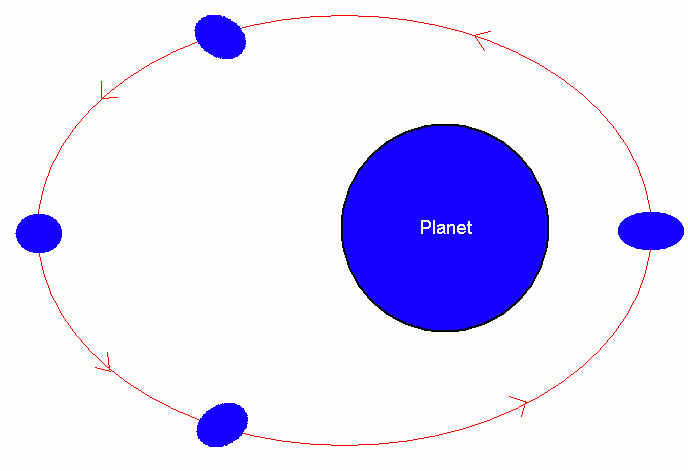Seas of water on icy moons of Jupiter and Saturn: still a mystery
Liquid water is one of the most important conditions for life. It’s no surprise that scientists are very interested in water in our solar system: both on planets as on their moons. But how can water flow in icy places like the moons of Jupiter and Saturn? Marc Rovira Navarro investigated it with funding from NWO/NSO at TU Delft. But many mysteries remain for the future space missions like JUICE, which will be launched next year.
Jupiter and Saturn are the two heaviest planets in our solar system. Saturn is about 95 times heavier than Earth and Jupiter is even more than 300 times heavier. They also surpass Earth in other respects: where we have just one moon to gaze at, on these giant planets you’d have a view of about 80 moons.
Liquid water
Since the end of last century, we have known that some of these moons contain large amounts of liquid water. This has been confirmed by several space missions, such as space probe Cassini that flew right through the eruptions of water-spouting geysers on Enceladus (moon of Saturn). Some moons, such as Jupiter's Europa, contain more water than there is in total on Earth.
These moons are located far from the sun in an icy spot in space. The outside of the moons consists of a thick layer of ice, but underneath, the moons harbor subsurface seas. Where do the moons get the heat needed to melt this ice? The answer lies in the tidal force.

Figure 1: The layers of Enceladus. Source: NASA
Kneadable moons
The gravitational pull that the giant planets exert on their moons is so great that the moons get a little out of shape. When the moons are close to the planet, they are stretched much more than when they are far away. That change in shape causes friction and heat in the lunar rocks and heat, much like when you knead some clay or wax to warm it up.

Figure 2: When the moon is close to the planet, it is stretched more. Source: Dmitri Pavlichin
Much is still unknown about the details of this heat transfer, for example where exactly the heat is transferred (mantle, ocean or ice crust) or the impact of waves and currents in the subsurface oceans.
Research on currents and tides
Marc Rovira Navarro has been researching the effect of tidal currents and waves in the subsurface oceans on the energy balance of the moons and looked whether these currents can be measured with future space missions. He conducted this research in collaboration with oceanographers at NIOZ and planetary scientists at TU Delft.
New questions
One of the moons that Rovira Navarro investigated was Enceladus, a small moon of Saturn. At this moon, the deformation of its ice and rocky core don’t generate enough energy to melt ice. The hypothesis of Navarro and his colleagues was that wave movements in the ocean would provide the necessary energy. After extensive calculations, that doesn't seem possible and the scientists have to adjust their ideas accordingly. Possible alternatives are that (1) the moon core is porous or (2) the density is not constant.
As Rovira Navarro says, "research is very non-linear”. You start with an idea, but gradually you get different results than expected and have to adjust your ideas. There are many open questions: Are the oceans well-mixed? What exactly does the core of the moons look like? What role do ocean currents play in the movement of ice? This all affects the movement of organic molecules and thus the possibility of life.
New space missions can hopefully answer some of these questions. One is the ESA mission JUICE, which will launch next year and visit three of Jupiter's moons. Its data will be of great value to Dutch scientists as they continue the search for life beyond Earth.
NWO/NSO funds planetary and earth observation research that is carried out using space infrastructure.

Figure 3: A draft of the prospective JUICE mission. Source: ESA